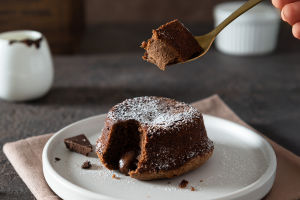We've all picked up a snack or drink that boldly says "0 sugar" on the label. It sounds great, especially when we're trying to eat healthier or cut down on sweet things. But what does "0 sugar" really mean?
Is there really no sugar at all? Let's break it down together.
What does "0 sugar" mean on a label?
According to food regulations in many countries, a product can be labeled as "sugar-free" or "0 sugar" if it contains less than 0.5 grams of sugar per serving. Yes — that means it can still have some sugar, just a tiny amount. So even if the label says "0," it doesn't always mean absolutely none.
Where does that little bit of sugar come from?
Some foods naturally contain small amounts of sugar — even vegetables, dairy, and grains. Also, during processing, tiny amounts of sugar may be added for taste, texture, or color. So "0 sugar" on the label often means very low sugar, not totally sugar-free.
Watch the serving size trick
Here's a sneaky part: that "less than 0.5g" rule applies per serving, not per package. A drink bottle might say it has 0 sugar, but if the bottle contains 2 or 3 servings, we could still be getting more sugar than we think. Always check how many servings are in the pack — it makes a big difference.
Sweet but not sugar?
Many "0 sugar" products use artificial or natural sweeteners like sucralose, stevia, or erythritol. These sweeteners don't count as sugar on labels, but they still make the food taste sweet. Some are calorie-free, while others have very low calories. Even though they don't raise our sugar intake, they can still affect how our body reacts to sweetness.
Why it matters to us
If we're managing our weight or watching our sugar for health reasons, knowing the truth behind "0 sugar" helps us make better choices. Some of us might think we're avoiding all sugar when we're actually not. That's why reading the full nutrition label — not just the big bold words — is so important.
How to spot hidden sugar
Sometimes sugar hides under different names. Even in "low sugar" foods, we might find ingredients like:
• Corn syrup
• Dextrose
• Maltodextrin
• Fructose
These are all forms of sugar. The best way to spot them is to look at the ingredients list, not just the "sugar" section.
Tips for reading food labels smarter
Let's stay sharp next time we're shopping:
• Always check the serving size
• Look at the total sugars and added sugars
• Read the ingredients list for hidden sweeteners
• Don't rely only on front-of-pack claims like "0 sugar" or "no added sugar"
It's okay to enjoy sweetness — in balance
We don't have to completely avoid sweet things. But understanding what we're eating helps us enjoy food with more confidence. Some "0 sugar" options can be great, but they're not magic. Our goal should be balance, not just labels.
So Lykkers, have you checked your snack labels lately?
Next time you grab a "0 sugar" drink or snack, take a second look at the label. You might be surprised by what you find. Let's make smarter choices together — for our health, energy, and peace of mind!


